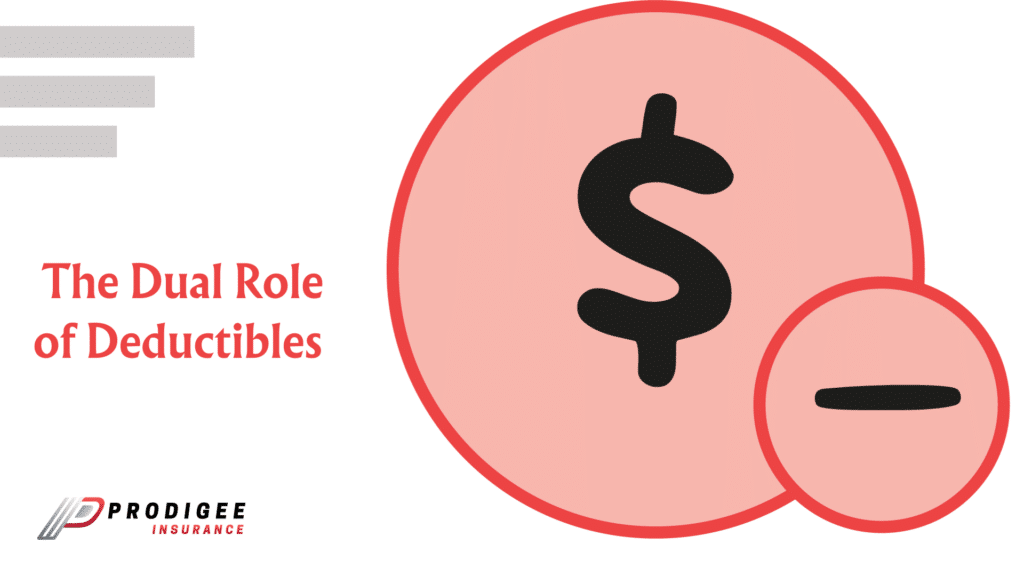
In the world of insurance, understanding the power of deductible coverage is akin to having a key that unlocks significant benefits. It’s a financial tool that can save you money while minimizing risk. In this comprehensive exploration, we will delve into the intricacies & power of deductible coverage and reveal how it can work to your advantage.
The Basics of Deductible Coverage
What Exactly is a Deductible?
A deductible is the amount of money you agree to pay out of pocket before your insurance policy kicks in to cover the remaining expenses. It’s essentially your financial contribution in the event of a claim. Deductibles are a fundamental component of various insurance policies, including auto insurance, device insurance, health insurance, commercial insurance, and homeowners insurance.

The Dual Role of Deductibles
Deductibles serve a dual purpose:
- Cost Sharing: Deductibles allow you to share the financial responsibility with your insurance provider. By requiring you to pay a portion upfront, insurers can offer you more affordable premium rates.
- Preventing Small Claims: These financial thresholds discourage policyholders from making frequent, minor claims. This, in turn, helps maintain reasonable insurance premiums by preventing overuse for minor incidents.
Varieties of Deductibles
Deductibles come in various forms, each with its own characteristics:
1. Fixed Dollar Deductible
A fixed dollar deductible requires you to pay a predetermined, specific amount before your insurance coverage begins. For instance, if you have a $500 deductible on your auto insurance, you would be responsible for the first $500 of any covered expenses.
2. Percentage-Based Deductible
In contrast, a percentage-based deductible is calculated as a percentage of the total claim amount. For example, if you have a 10% deductible and your claim amounts to $5,000, your deductible would be $500 (10% of $5,000).
The Impact on Premiums
Understanding the relationship between deductibles and premiums is key:
- Higher Deductible: Opting for a higher deductible usually results in lower monthly or annual premium payments. While this means you pay less for insurance over time, it also means a higher initial cost in the event of a claim.
- Lower Deductible: Conversely, selecting a lower deductible leads to higher premiums. With a lower upfront cost in the case of a claim, you’ll pay more for insurance overall.

Harnessing the Power of Deductibles
Selecting the right deductible is a strategic decision based on your unique circumstances:
1. Financial Considerations
Evaluate your financial situation to determine how much you can comfortably afford to pay out of pocket when a claim arises. If you have substantial savings, a higher deductible may be a suitable choice.
2. Risk Tolerance
Your willingness to take on a larger financial responsibility in exchange for lower premiums is a personal decision. Consider how comfortable you are with bearing a higher initial cost during a claim.
3. Frequency of Claims
Reflect on your claim history and anticipate how often you may need to make claims in the future. If you rarely make claims, a higher deductible could be a cost-effective option.
Deductibles in Different Insurance Types
Deductibles aren’t one-size-fits-all; they vary across different insurance policies:
Auto Insurance
Auto insurance typically offers deductible options for collision and comprehensive coverage. The choice you make will determine how much you’ll pay in the event of vehicle damage or theft.
Health Insurance
Health insurance plans may have both annual deductibles and per-service deductibles. Understanding these distinctions can help you manage healthcare costs effectively.
Homeowners Insurance
Homeowners insurance often has separate deductibles for different perils, such as wind or hail damage. Familiarize yourself with the specifics of your policy to be adequately prepared.
Conclusion
The power of deductible coverage is a potent financial tool that can save you money and reduce risk. By understanding the types of deductibles, their influence on premiums, and how to choose the right deductible for your needs, you can navigate the realm of insurance with confidence.

